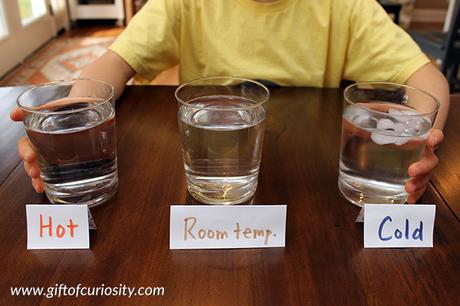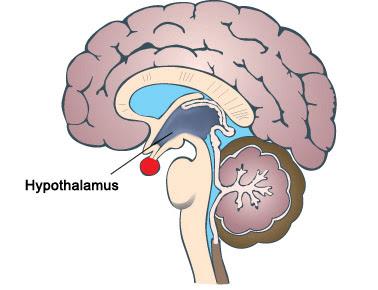1 Get three containers of around 2-5 litres and big enough to let you put your hand in.
2 Some ice.
3 Fill one container with tap water and the ice.
4 Fill one container with hot water about bath temperature.
5 Fill one container with water at room temperature.

Put your left hand into the container holding the ice, and your right hand into the container holding the bath temperature water. Leave your hands in the water for about 2 minutes.
Then simultaneously move both of your hands into the container at room temperature.
What do you feel? You will probably be experiencing something quite peculiar - a mismatch, or difference in temperature sensation, between the two hands. Even though both hands are in the same container and experiencing the same temperature, the left hand should feel hot, whilst the right should find the water chilly.
You are experiencing something called a sensory adaptation - a phenomenon that hands are particularly prone to as they are key components of the somatosensory system which provide us with our physical sensation of the world. This also includes our skin, muscles, the heart, joints, bones and heart.
Sensation detecting nerves found in this system are called sensory nerves and are activated by different sensations, be it temperature, pain, or tactile sense (touch). On the end of each sensory nerve there are many different receptors which detect different feelings. For example, thermoreceptors specifically detect temperature. Some thermoreceptors detect cold conditions whilst other thermoreceptors are activated by warmth.
Electrical information from the thermoreceptor activation is passed from your hands, along your arms, up through the top part of your spinal cord and into the brain through the sensory nerves.
This is one of the ways that the human body adapts to different temperatures. Other biological processes use delicate feedback systems to achieve thermoregulation.
Central control is based in the hypothalamus which balances the nervous and endocrine (glands) systems. It receives signals from all over the body and triggers hormonal responses to normalise the body’s temperature.

Efferent control can be behavioural such as conscious actions to put on a sweater if it’s cold or autonomic responses such as sweating or shivering.
From all over the body means just that. Information and consequent action is gathered from the thyroid gland, liver, brain, heart and blood.
Going back to the experiment with your hand. The sensitivity to temperature had altered based on your previous environment. The same process explains why when you first jump into the sea on a really warm day the sea feels rather chilly at first, but then you don't notice the temperature so much. But if you jump into the sea on a colder day the sea doesn't seem to be that nippy. It's all relative.
But not necessarily useful:

at Belvoir Bay
I was horrified by the sight
of a beautiful woman
in a bikini
early morning
there’d been no footprints
on my beach
no one to look at me
on my holiday
no idea how she got there
my last day
with the fear
of ice cold water
and running away
again
she took no notice
but I did
forced to commit to something
at last
not stopping
sort of falling
that took me through waves
that couldn’t care less
I did it
backstroke and crawl
long enough
for the perfect sand
to fill with folk
stretched out on beach mats
and they could see me
stroll to my clothes
casually pick up a towel.First published in Reach 2022
Terry Quinn Email ThisBlogThis!Share to TwitterShare to Facebook
